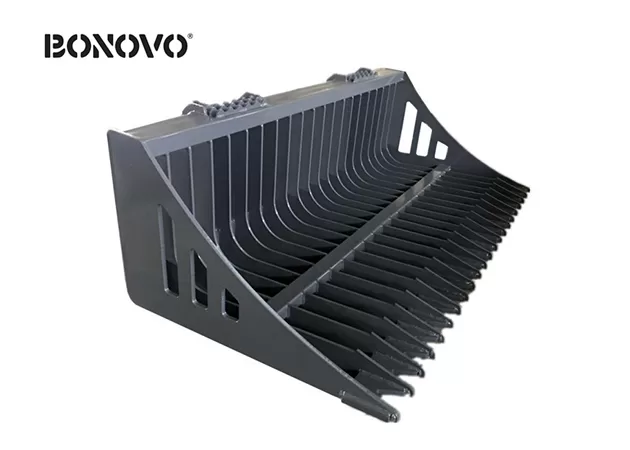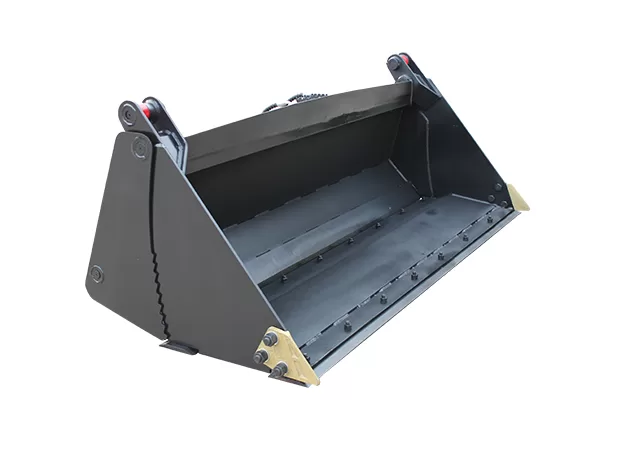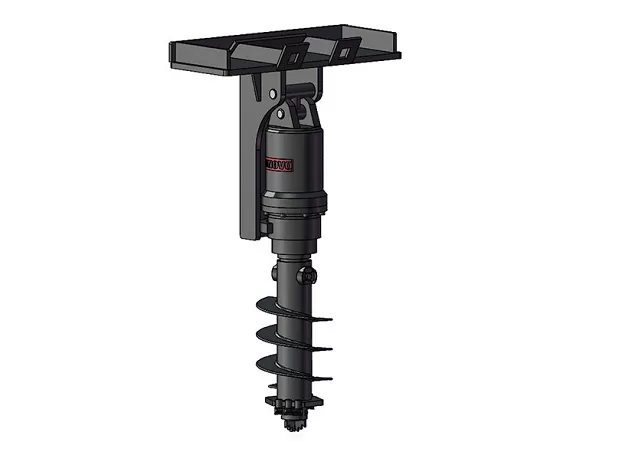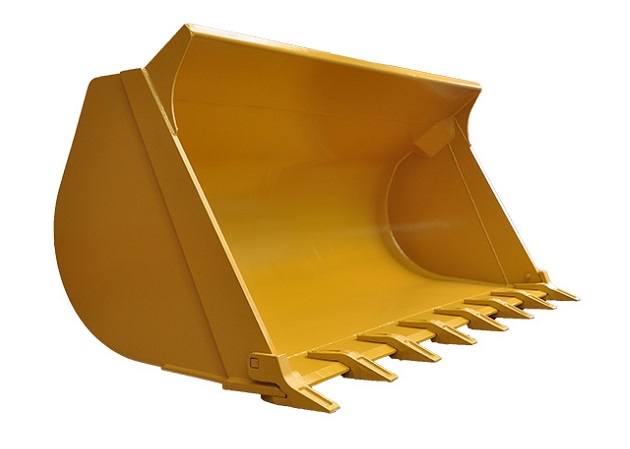Can You Efficiently Dig Holes with a Front End Loader? A Comprehensive Guide - Bonovo
This article dives into the question of whether a front end loader is the right tool for digging holes. We'll explore the techniques, limitations, and alternative attachments that can make your digging projects more efficient and successful. Whether you're a seasoned contractor or a homeowner tackling a weekend project, this guide provides valuable insights to help you get the job done right.
Can You Really Dig Holes with a Front End Loader?
Yes, you can dig holes with a front end loader (FEL), but it's essential to understand its capabilities and limitations. A front end loader is primarily designed for lifting, carrying, and dumping materials like dirt, gravel, and debris. While it can excavate soil, it's not as precise or efficient as specialized digging equipment like an excavator or a backhoe. The loader's bucket is great for scooping loose material and moving large quantities of dirt, but it may not be the best choice for creating neat, deep, or precisely shaped holes.
Think of it like this: you could use a butter knife to cut a steak, but a steak knife is designed for the job and will do it much better. Similarly, a loader can dig, but other tools are often more suitable. However, with the right techniques and potentially some specialized attachments, a front end loader can be a valuable tool for certain digging tasks, especially on a farm or larger property.

What are the Limitations of Using a Loader for Digging?
Front end loaders are versatile machines, but they have inherent limitations when it comes to digging holes, especially compared to dedicated digging equipment. Here's a breakdown:
- Bucket Shape and Size: The standard bucket on a loader is typically wide and shallow, designed for scooping and carrying rather than penetrating the ground. This shape makes it difficult to dig deep, narrow holes. The size of the bucket also means you'll be removing a larger volume of dirt than necessary for smaller holes, leading to more work filling and grading afterwards.
- Limited Digging Depth: The loader's arms and hydraulics are designed primarily for lifting, not downward force. This limits the digging depth you can achieve, especially in compacted soil. Trying to force the bucket too deep can strain the machine and potentially cause damage.
- Maneuverability: Loaders, especially larger ones, have a wider turning radius than excavators or skid steers. This can make it challenging to position the bucket precisely where you need it, especially in tight spaces.
- Ground Disturbance: The loader's tires can compact the soil around the hole, making it harder to work with and potentially affecting drainage. The wide bucket also tends to disturb a larger area of the ground surface than necessary.
- Lack of Precision:Achieving that neat look is not easy. The loader bucket isn't designed for detailed or angled digging.
How to Dig a Hole with a Loader: Step-by-Step Guide
While not ideal, here's how to dig a hole with a loader if that's the equipment you have available:
- Assess the Ground: Before you start, check the soil conditions. If it's hard-packed, rocky, or full of roots, you might need to loosen it first with a ripper or consider using a different tool. Also, call 811 to locate any underground utilities before you dig! Safety First!
- Position the Loader: Approach the digging area slowly and position the bucket where you want the hole to be.
- Lower and Tilt the Bucket: Lower the bucket to the ground and tilt it slightly forward, so the cutting edge makes contact.
- Apply Downward Pressure and Scoop: Use the loader's hydraulics to apply gentle downward pressure while slowly driving forward. The bucket should begin to penetrate the soil. Avoid forcing it, as this could damage the machine. The goal is to scoop a layer of dirt into the bucket.
- Lift and Dump: Once the bucket is full (or partially full, depending on the soil and machine capacity), lift it and dump the dirt to the side, creating a pile.
- Repeat: Continue this process of lowering, tilting, scooping, lifting, and dumping until you reach the desired depth and size. You might need to make multiple passes, removing a layer of dirt at a time.
- Back dragging is a technique that levels and removes material in a backword motion.
What are the Best Loader Attachments for Hole Digging?
To overcome the limitations of a standard loader bucket, consider these attachments:
- Auger: A loader-mounted auger is the best option for digging round, deep holes, like those for fence posts or planting trees. Augers come in various sizes to match your needs.
- Tooth Bar: A tooth bar attaches to the front edge of your loader bucket, providing teeth that help break up compacted soil and make digging easier. BONOVO's bucket teeth are a good example of durable, wear-resistant options.
- Ripper: A ripper is a single, heavy-duty shank that attaches to the loader and is used to loosen compacted soil or break up rocky ground before digging.
- 4-in-1 Bucket: This versatile bucket can act as a standard bucket, a dozer blade, a grapple, and a clam shell. It offers more flexibility than a standard bucket but still isn't ideal for precise hole digging. The 4 In 1 Bucket For Skid Steer Loader demonstrates the versatility of this type of attachment.
- Backhoe attachment:Transforms the loader in a excavator.

Excavator Attachments vs. Skid Steer Loaders: Which is Better for Digging?
Both excavators and skid steer loaders are superior to front end loaders for dedicated digging tasks, but they have different strengths:
- Excavators: Excavators, especially mini-excavators, are purpose-built for digging. They have a rotating cab and a boom and arm with a bucket that can dig deep, precise holes with excellent control. They are ideal for trenching, foundation work, and any job requiring precise excavation.
- Skid Steer Loaders: Skid steers are more versatile than excavators and can use a wide range of attachments, including augers, trenchers, and specialized digging buckets. They are highly maneuverable in tight spaces and are a good choice for smaller digging projects, landscaping, and material handling.
If you need the equipment primarly for digging, go for a excavator. If you need a versatile machine, pick the skid steer.
Tips for Efficient and Safe Digging with a Loader
- Start Slow: Don't try to dig too much dirt at once, especially in hard soil. Take smaller bites and make multiple passes.
- Keep the Bucket Level: Avoid tilting the bucket too far forward or backward, as this can make it harder to control and can damage the bucket.
- Watch for Obstacles: Be aware of rocks, roots, and other obstacles that could damage the bucket or the machine.
- Use Spotter: If you're digging in a confined space or near utilities, have a spotter guide you.
- Wear Proper Safety Gear: Always wear safety glasses, gloves, and sturdy work boots.
- Maintain the Machine, lubricating the joints.
How Do I Dig a Large Hole or Trench with a Loader?
Digging a large hole or trench with a loader requires a systematic approach:
- Outline the Area: Mark the perimeter of the hole or trench with stakes and string or spray paint.
- Remove the Topsoil: Use the loader bucket to scrape off the top layer of soil and set it aside.
- Dig in Sections: Divide the hole or trench into smaller, manageable sections.
- Work from One End: Start at one end of the trench or hole and work your way to the other, removing soil layer by layer.
- Create a Ramp: As you dig deeper, create a gentle ramp on one side of the hole or trench so you can drive the loader in and out.
- Maintain Slope (for trenches): If you're digging a trench for drainage, ensure a consistent slope to allow water to flow.

Can I Use a Loader to Dig in Hard or Rocky Soil?
Digging in hard or rocky soil with a loader is challenging and can potentially damage the machine. A standard bucket is not designed for this type of ground. Here's what you should do:
- Loosen the Soil: Use a ripper attachment to break up the compacted soil or rocks before attempting to dig with the bucket.
- Consider a Tooth Bar: A tooth bar on the bucket can help, but it's still not ideal for very hard or rocky conditions.
- Use a Rock Bucket: If you frequently encounter rocky soil, consider investing in a rock bucket. These buckets are reinforced and have stronger teeth designed for handling rocks. Check out the Rock Bucket 60-84 inch for a heavy-duty option.
- Rent an Excavator: For very hard or rocky ground, renting an excavator with a hydraulic hammer attachment is often the most efficient and safest option.
What are the Alternatives to Using a Loader for Digging Holes?
- Excavator (Mini or Standard): The best overall choice for most digging projects.
- Backhoe: A versatile machine with a digging arm on one end and a loader bucket on the other.
- Skid Steer with Auger or Trencher Attachment: A good option for smaller holes and trenches.
- Trenching Machine: Specifically designed for digging trenches.
- Hand Digging (Shovel and Post Hole Digger): For small, shallow holes, hand digging might be the most practical option.
Maintenance Tips for Loader Buckets and Attachments after Digging
Proper maintenance is crucial to extend the life of your loader bucket and attachments:
- Clean After Each Use: Remove dirt, mud, and debris from the bucket and attachments.
- Inspect for Damage: Check for cracks, dents, wear, and loose bolts.
- Grease Moving Parts: Regularly lubricate all grease points on the bucket and attachments.
- Sharpen Cutting Edges: If your bucket has a cutting edge, keep it sharp for better digging performance.
- Replace Worn Teeth: If you have a tooth bar or rock bucket, replace worn or damaged teeth promptly.
- Store Properly: When not in use, store buckets and attachments in a dry, covered area to protect them from the elements.
Front-End Loader Safety Best Practices
- Know Your Machine: Familiarize yourself with the loader's operating manual and safety features.
- Pre-Operational Checks: Before each use, inspect the loader for any damage or leaks.
- Seatbelt:Always use it.
- Load Capacity: Never exceed the loader's rated operating capacity.
- Safe Speeds: Operate the loader at safe speeds, especially when turning or working on uneven ground.
- Visibility: Ensure you have good visibility of the work area.
- Slopes: Be extra cautious when operating on slopes. Avoid sharp turns and travel slowly.
- Passengers: Never allow passengers to ride in the bucket or on the loader.
- Dismounting: Always lower the bucket to the ground, set the parking brake, and turn off the engine before dismounting.

Key Takeaways
- Front end loaders can dig holes, but they are not the most efficient tool for the job.
- Specialized attachments like augers and tooth bars can significantly improve a loader's digging capabilities.
- Excavators and skid steers with digging attachments are generally better suited for hole digging.
- Always prioritize safety when operating a loader.
- Regular maintenance is essential to keep your loader and attachments in good working condition.
- Contact 811 before you dig, safety first!
By understanding the capabilities and limitations of your equipment and following these guidelines, you can tackle your digging projects safely and effectively. Remember, choosing the right tool for the job is crucial for achieving the best results and avoiding unnecessary strain on your machine. And as Allen, from Bonovo, a B2B company specializing in the manufacturing of excavator, skid steer, and wheel loader attachments would confirm: there is the perfect attachment for every task.




